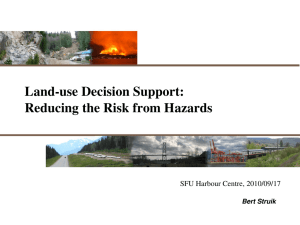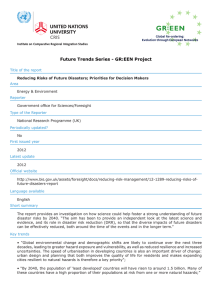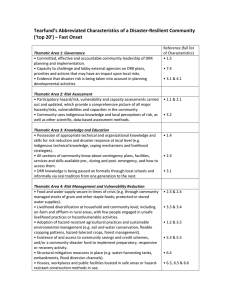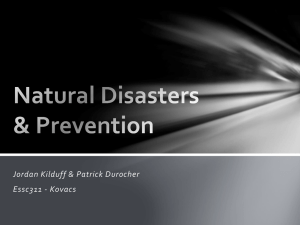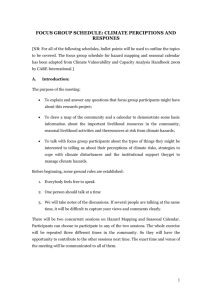Annotation 18 - STSSustainabilityStudiesMethods
advertisement
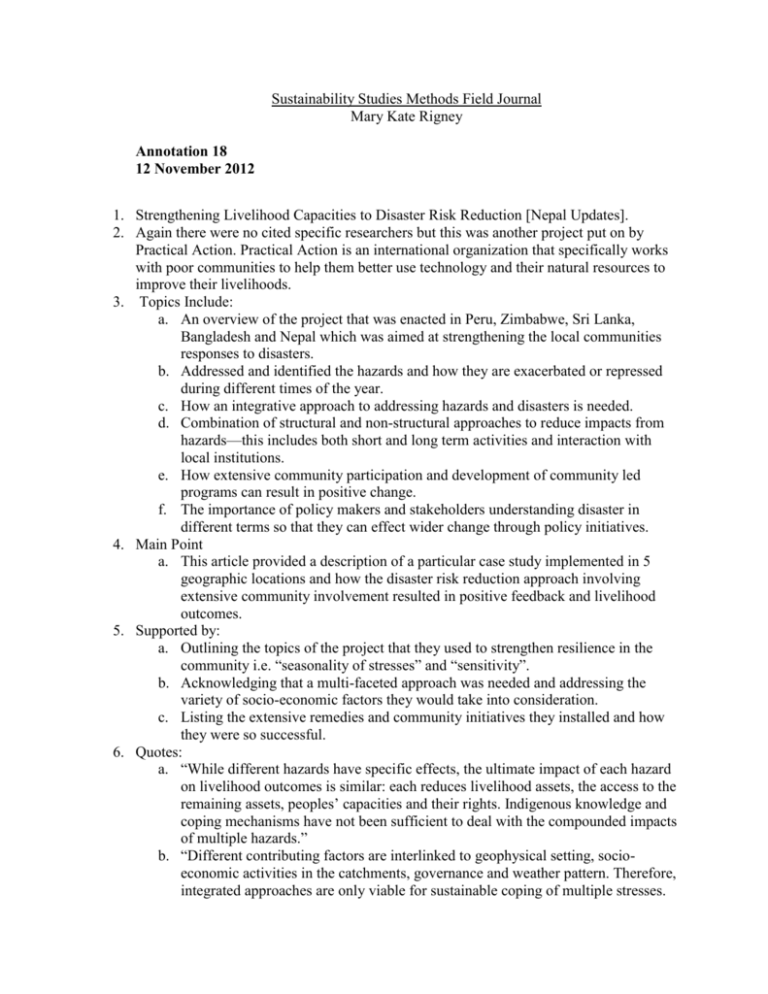
Sustainability Studies Methods Field Journal Mary Kate Rigney Annotation 18 12 November 2012 1. Strengthening Livelihood Capacities to Disaster Risk Reduction [Nepal Updates]. 2. Again there were no cited specific researchers but this was another project put on by Practical Action. Practical Action is an international organization that specifically works with poor communities to help them better use technology and their natural resources to improve their livelihoods. 3. Topics Include: a. An overview of the project that was enacted in Peru, Zimbabwe, Sri Lanka, Bangladesh and Nepal which was aimed at strengthening the local communities responses to disasters. b. Addressed and identified the hazards and how they are exacerbated or repressed during different times of the year. c. How an integrative approach to addressing hazards and disasters is needed. d. Combination of structural and non-structural approaches to reduce impacts from hazards—this includes both short and long term activities and interaction with local institutions. e. How extensive community participation and development of community led programs can result in positive change. f. The importance of policy makers and stakeholders understanding disaster in different terms so that they can effect wider change through policy initiatives. 4. Main Point a. This article provided a description of a particular case study implemented in 5 geographic locations and how the disaster risk reduction approach involving extensive community involvement resulted in positive feedback and livelihood outcomes. 5. Supported by: a. Outlining the topics of the project that they used to strengthen resilience in the community i.e. “seasonality of stresses” and “sensitivity”. b. Acknowledging that a multi-faceted approach was needed and addressing the variety of socio-economic factors they would take into consideration. c. Listing the extensive remedies and community initiatives they installed and how they were so successful. 6. Quotes: a. “While different hazards have specific effects, the ultimate impact of each hazard on livelihood outcomes is similar: each reduces livelihood assets, the access to the remaining assets, peoples’ capacities and their rights. Indigenous knowledge and coping mechanisms have not been sufficient to deal with the compounded impacts of multiple hazards.” b. “Different contributing factors are interlinked to geophysical setting, socioeconomic activities in the catchments, governance and weather pattern. Therefore, integrated approaches are only viable for sustainable coping of multiple stresses. That needed linking different sectors and stakeholders addressing development priorities and DRR together.” c. “However, a range of discussions, trainings, workshops and exposures between vulnerable communities, government line agencies, development organizations and political party representatives helped to establish common understanding on hazards, vulnerabilities and their consequences. This has helped to create synergy to integrated and cooperative actions from different stakeholders in DRR though slow in pace.” 7. Research Methods Questions: a. When the community members participated in training programs were the researchers selective in who could participate—i.e. were only men taught the farming techniques? b. Who funded the project and how did the government agencies afford to install that? c. How do programs like this cease—do they fade out and slowly leave the communities or do they just all at once stop? 8. Further Research a. What types of criteria are used to determine which communities will be selected for these programs to be installed in, considering that there are so many areas around the world in need of these unique applications of disaster management? b. Do researchers ever face any adversity from the local community members who are reluctant to participate? Or any issues with local governments? c. What was there success rates in the other geographic locations where this project was installed i.e. Peru, Zimbabwe, Sri Lanka and Bangledesh?
